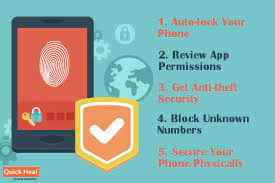You’ve beefed up the security for your online accounts, so you feel confident sticking your smartphone in your pocket and heading out the door. But many consumers don’t realize that the software in their phones can track their every move. Whether you have an iOS or Android device, Apple and Google can collect data about how you use it: the places you go, the apps you run, the search queries you type into the web browser, and so on. You can read detailed privacy policies for both Apple and Google online.
Although this sounds unnecessarily invasive, the companies use a lot of your data in helpful ways. For example, Apple relies on crash reports from apps to fix bugs in its software, while Google keeps tabs on your location so it can tell you how long the drive home will be. Are you comfortable with your phone reporting its location if it means you can find it when it gets lost? If your desire for privacy outweighs these benefits, you can decide how much you trust these companies with your data and how much information you’re prepared to share with them. Whatever you choose, it’s important to be aware of what you’re sharing, and how you can limit it if you want to.
Apple tends to limit its data collection to fewer locations than Google does. A lot of personalized data, like the stuff Siri knows about you, stays locked on your device and never goes back to Apple’s servers. Apple also keeps less personal information on its users. This anonymized data allows the company to learn about its users’ habits without storing complete profiles on individuals themselves.
Google would say that the extra data it collects, from what you’ve watched on YouTube to your home address, helps customize its services and apps for users, with better personalization and programs that recognize you across all devices. We’ll let you decide on that.
On an iPhone, the Privacy menu within the Settings app is the obvious place to start. Tap Location Services, then System Services to change how Apple can use your location and how it can’t. Tap Significant Locations, for example, and you’ll be able to use a toggle switch to decide whether iOS keeps records of places you visit often. You may have to enter your passcode to proceed. Apple uses this data to provide location-related features in Calendar, Maps, and other Apple apps. From the same screen, you can wipe the location history your iPhone has built up: tap Clear History, then Clear History again on the popup menu.
The location-use menu includes dozens of switches, from My Find iPhone to Routing & Traffic. It’s your call which ones you’re comfortable enabling. You can also switch location monitoring on or off for individual apps, whether they’re Apple-made or not, from the main Location Services menu.
In addition to your location, Apple gathers information on your phone’s hardware and software performance. Head back to the Privacy screen, tap Analytics & Improvements, and you can control how much of this anonymized data Apple sends back to base and to developers.
You can also control whether Apple will use your information in order to try to serve up more relevant advertisements. Tap Apple Advertising, then toggle off Personalized Ads to turn off targeted ads on iOS.
Source : https://www.popsci.com/protect-your-smartphone-privacy/








